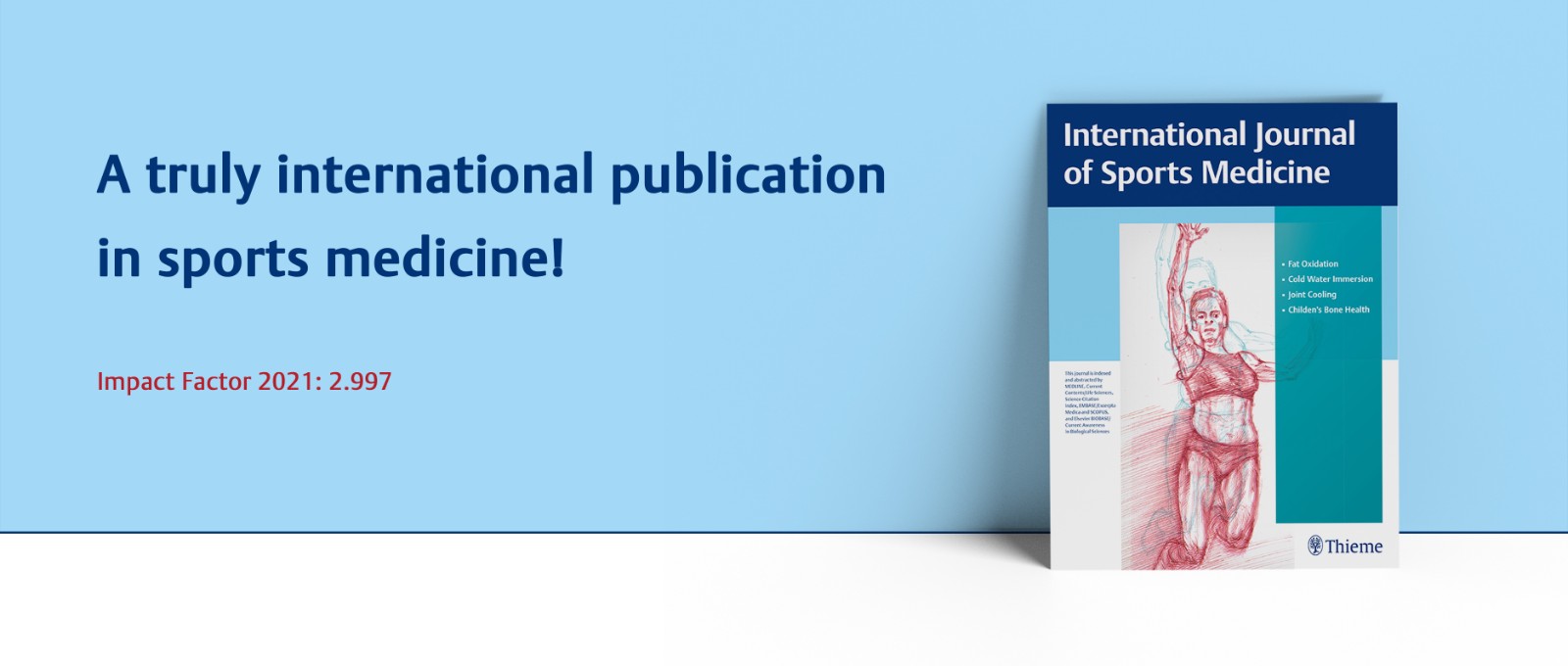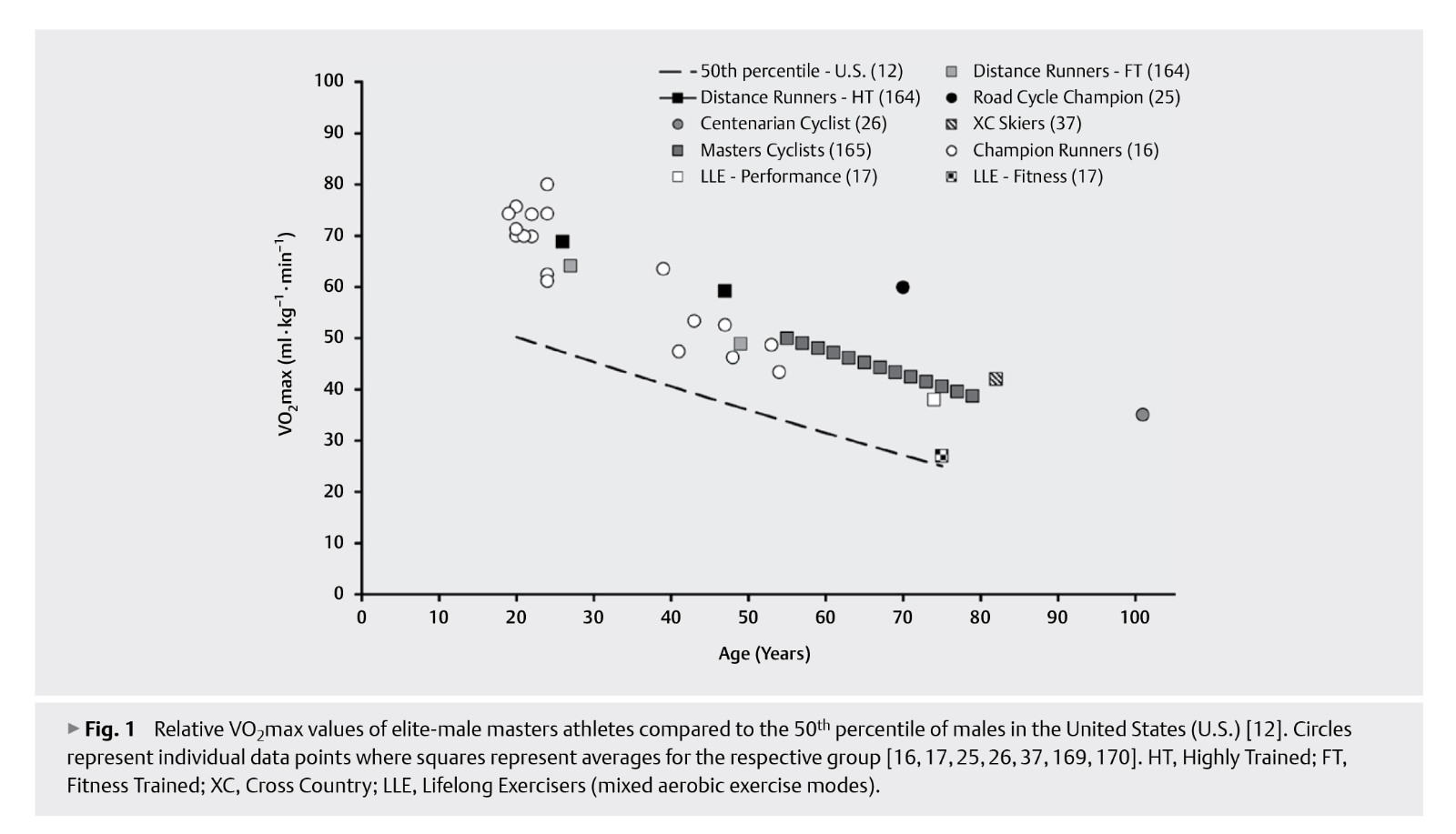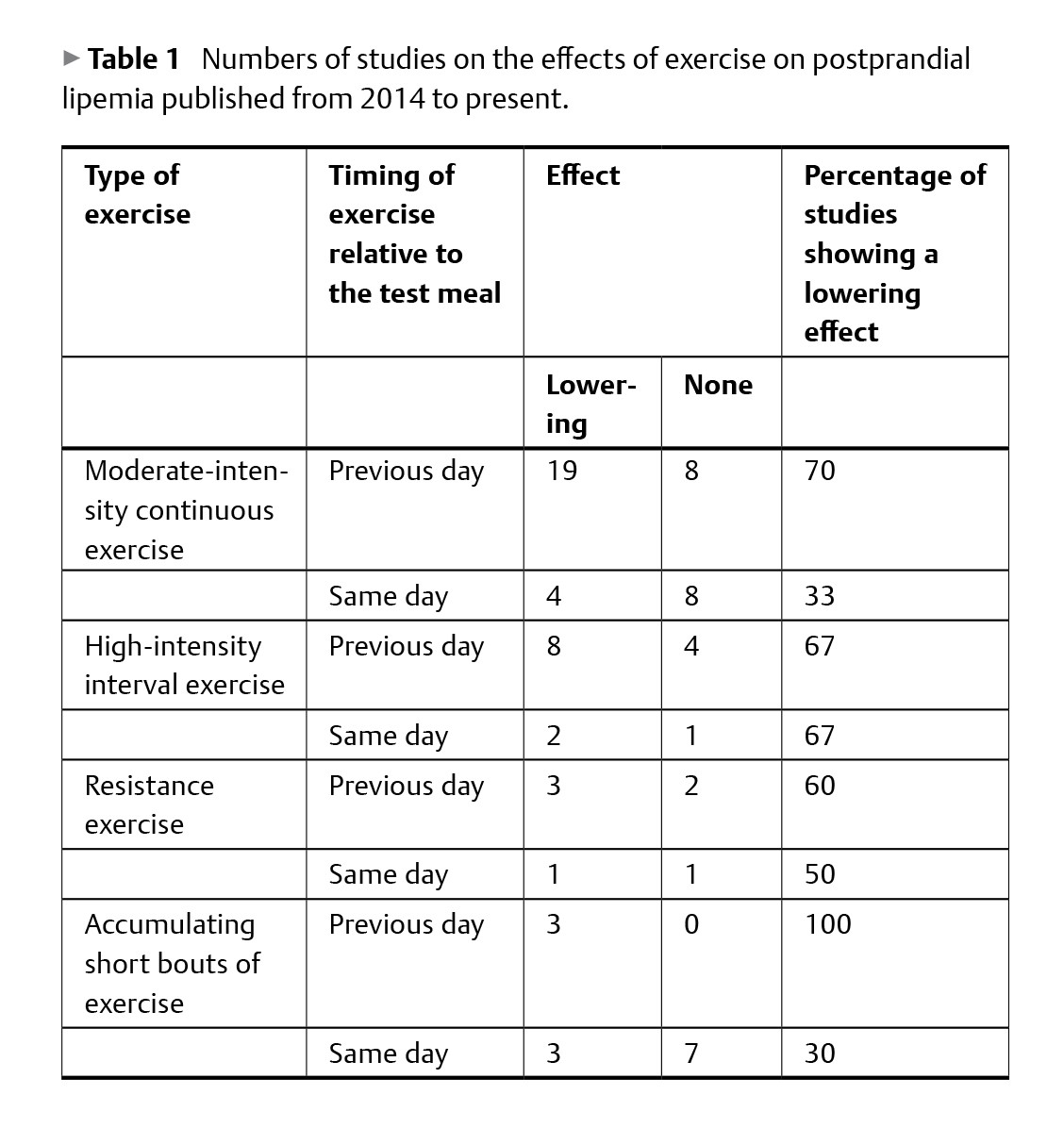

欢迎免费阅读运动医学期刊International Journal of Sports Medicine最新精选论文。
▼
Review
The Aging Athlete: Paradigm of Healthy Aging
Kevin J. Gries, Scott W. Trappe
The Exercise Boom of the 1970’s resulted in the adoption of habitual exercise in a significant portion of the population. Many of these individuals are defying the cultural norms by remaining physically active and competing at a high level in their later years. The juxtaposition between masters athletes and non-exercisers demonstrate the importance of remaining physically active throughout the lifespan on physiological systems related to healthspan (years of healthy living). This includes ~50% improved maximal aerobic capacity (VO2max) and enhanced skeletal muscle health (size, function, as well as metabolic and communicative properties) compared to non-exercisers at a similar age. By taking a reductionist approach to VO2max and skeletal muscle health, we can gain insight into how aging and habitual exercise affects the aging process. Collectively, this review provides a physiological basis for the elite performances seen in masters athletes, as well as the health implications of lifelong exercise with a focus on VO2max, skeletal muscle metabolic fitness, whole muscle size and function, single muscle fiber physiology, and communicative properties of skeletal muscle. This review has significant public health implications due to the potent health benefits of habitual exercise across the lifespan.

Review
Exercise to Lower Postprandial Lipemia: Why, When, What and How
Anatoli Petridou, Vassilis Mougios
Petridou and Mougios review recent findings on the ability of exercise to lower postprandial lipemia (PPL). Specifically, they answer why exercise is important in lowering PPL, when it is most effective to exercise to achieve this, what the preferred exercise is and how exercise reduces PPL. Most findings confirm the power of exercise to lower PPL, which is an independent risk factor for cardiovascular disease. Exercise is most effective when performed on the day preceding a high- or moderate-fat meal. This effect lasts up to approximately two days; therefore, one should exercise frequently to maintain this benefit. However, the time of exercise relative to a meal is not that important in real-life conditions, since one consumes several meals during the day; thus, an exercise bout will inevitably exert its lowering effect on PPL in one or more of the subsequent meals. Although moderate-intensity continuous exercise, high-intensity intermittent exercise, resistance exercise and accumulation of short bouts of exercise throughout the day are all effective in lowering PPL, submaximal, high-volume interval exercise seems to be superior, provided it is tolerable. Finally, exercise reduces PPL by both lowering the rate of appearance and increasing the clearance of triacylglycerol-rich lipoproteins from the circulation.

